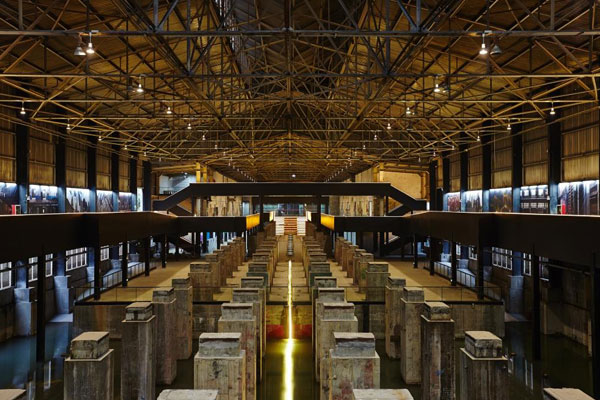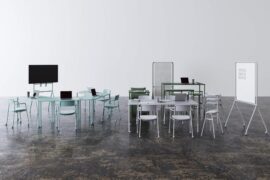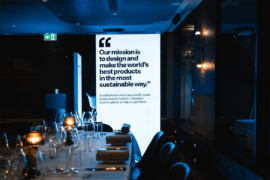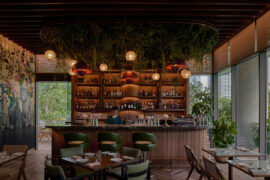We look back at the Bi-City Biennale of Urbanism Architecture – Shenzhen. The exhibition has been extended to 14 March.

March 5th, 2014
While the Bi-City Biennale of UrbanismArchitecture – Shenzhen has held its official closing ceremony, the exhibition itself has been extended to 14 March, which is indicative of its success. As of January, the three-month long event has received 120,000 visitors, and the final figure is projected to hit 180,000.
The Shenzhen biennale is split between two main venues. At the transformed former Guangdong Glass Factory, UABB Creative Director Ole Bouman explored his manifesto of ‘Biennale at risk” and in three months, turned the formerly derelict factory into a ‘Value Factory’ nurturing local, regional and international collaborations. Some of the cultural institutions that have taken part include the Victoria & Albert Museum (V&A), MAXXI, Droog Design and MoMA New York.
The second venue is located at the abandoned warehouse at Shekou Ferry Terminal, which was renamed “Border Warehouse” for this event. Curators Li Xiangning and Jeffrey Johnson adopted the space for exhibitions and re-conceived it as a space that can continue to play a role in Shenzhen’s cultural landscape.
The post-industrial site at the Shekou transport terminal was perfect for their curatorial ‘documentary’ on the theme of “Crossing Urban Boundaries”. The exhibition was organised into five sections: Border Documentary Timeline, which established the historical and conceptual framework; Crossing Border Case Studies, which presented research, projects and speculations; Exploring Social Boundary, which focused on critical issues usually less visible and marginalised; National and Regional Pavilions, where invited curators from nine countries and regions created exhibitions; and Border Video Galleries, where 12 different interpretations of urban borders through the medium of video were continuously projected. Collectively, the more than 80 exhibitions and 100 participants constructed a diverse historical narrative on the city and its boundaries—both visible and invisible. The exhibition not only represented historical conditions of the city but also brought to light many critical issues confronting cities today, both in China and around the world.
Bi-City Biennale of UrbanismArchitecture – Shenzhen
szhkbiennale.org
INDESIGN is on instagram
Follow @indesignlive
A searchable and comprehensive guide for specifying leading products and their suppliers
Keep up to date with the latest and greatest from our industry BFF's!

Welcomed to the Australian design scene in 2024, Kokuyo is set to redefine collaboration, bringing its unique blend of colour and function to individuals and corporations, designed to be used Any Way!

London-based design duo Raw Edges have joined forces with Established & Sons and Tongue & Groove to introduce Wall to Wall – a hand-stained, “living collection” that transforms parquet flooring into a canvas of colour, pattern, and possibility.
The internet never sleeps! Here's the stuff you might have missed

MillerKnoll reimagines the convention of dinner table interactions by plating up a future-forward menu of sustainable design conversation starters as part of the inspiring “Conversations for a Better World” event series.

Richmond came alive for Saturday Indesign 2025 as showrooms, rooftops and laneways transformed into a celebration of design, creativity and connection.

Grounded by the rich warmth of American white oak, The Standard’s newly opened restaurant, Kaya, redefines the classic dining convention through a tasteful fusion of biophilic design, mid-century modern sensibility and elevated whimsy.